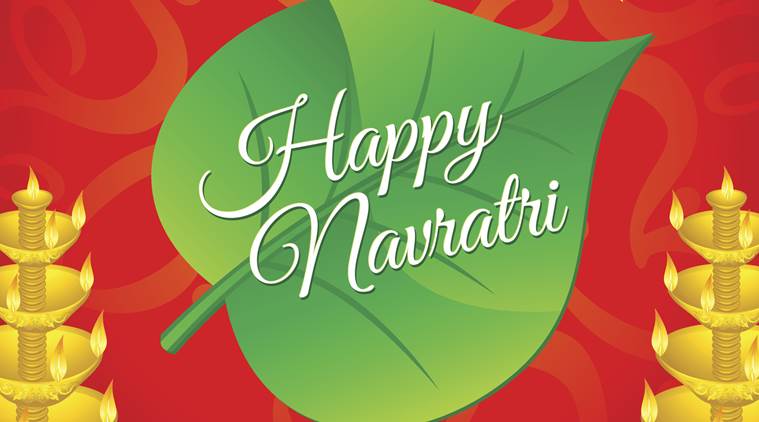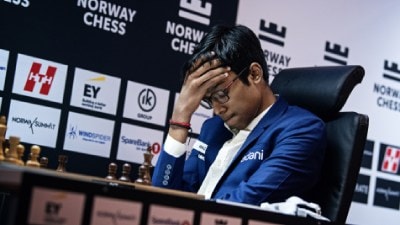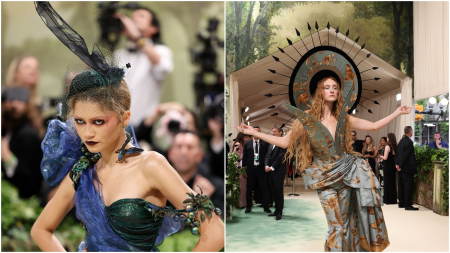- India
- International
How is Chaitra Navratri different from Sharad Navratri? Here’s all you need to know
People fast during these divine nine-days but what most don't know is that on each day, a different form of Goddess Durga is worshipped.
 Vasanta or Chaitra Navaratri, which is observed during the Shukla Paksha of Chaitra, is mostly observed in northern India and western India. (Source: Thinkstock Images)
Vasanta or Chaitra Navaratri, which is observed during the Shukla Paksha of Chaitra, is mostly observed in northern India and western India. (Source: Thinkstock Images)
Navratri, the nine-day Hindu festival, is a celebration of Shakti (power). The festival which has a deep religious significance is celebrated five times a year – Vasanta or Chaitra Navaratri, Ashadha Navaratri, Sharad Navaratri, Paush Navaratri and Magha Navaratri. However, it’s Vasanta Navaratri which falls in March-April and Sharad Navaratri (during September-October) that are celebrated with much fanfare throughout the country.
Vasanta or Chaitra Navaratri, which is observed during the Shukla Paksha of Chaitra, is mostly observed in northern India and western India. The celebration marks the start of the Hindu New Year as per the Luni-solar calendar and Maharastrians celebrate is as Gudi Padwa while Kashmiri Hindus observe it as Navreh. Even in Andhra Pradesh, Telangana and Karnataka, Hindus celebrate it as Ugadi. The nine-day festival which is also known as Rama Navratri ends on Rama Navami, Lord Ram’s birthday.
Meanwhile, Sharad Navaratri, also called Maha Navaratri, celebrated during the lunar month of Ashvin is widely celebrated in eastern part of India as Durga Puja and also, northern and western regions. This Navratri which is dedicated to nine forms of Maa Shakti namely, Durga, Bhadrakali, Jagadamba, Annapurna, Sarvamangala, Bhairavi, Chandika, Lalita, Bhavani and Mookambika, celebrates the slaying of demon Mahishasura by Goddess Durga, after a long battle of nine days.

ALSO READ: When is Ugadi 2017: Date, Muhurat, Puja Vidhi, Mantra and Auspicious Timings of Ugadi
There’s another legend associated with Sharad Navratri. It is believed that Lord Ram ahead of the battle worshipped all the nine forms of Goddess Durga to gain her powers in order to defeat Ravana. It is on the tenth day, which is also known as Vijaya Dashmi or Dusshera, Lord Ram won back Sita.
ALSO READ: Gudi Padwa 2017: Here’s how Maharashtra is gearing up for the festival
 Devotees offer prayers inside the historical Kali Mata Temple on the first day of the Navratri festival in Jammu. (Source: PTI)
Devotees offer prayers inside the historical Kali Mata Temple on the first day of the Navratri festival in Jammu. (Source: PTI)
Significance of celebrations during Chaitra Navratri
People fast during these divine nine-days but what most don’t know is that on each day, a different form of Goddess Durga is worshipped. Day one starts with worshipping Mata Shailputri who is the consort of Lord Shiva and is the one who embodies the power equal of the divine trinity of Brahma, Vishnu and Mahesh. Day two is about Bhramacharini Mata, the goddess who observes austerity and bless the devotees with peace and happiness.
ALSO READ: Gudi Padwa 2017: Here’s how Maharashtra is gearing up for the festival
Day three pays respect to Chandraghanta Maa who is the apostle of bravery and possess strength to fight the battle against demons. Day four observes Mata Kushmanda, who is considered the creator of the universe. Day five pays tribute to Skanda Mata, the mother of Lord Kartikeya who was the chosen one to lead the gods during the war against the demons.
Day six worships Katyayni Mata, an avatar of Durga who embodies courage, while day seven is about Kalratri Maa who has three eyes and flame emanating from her breath – her job is to protect her devotees from evil. Navratri also celebrates calmness and peacefulness in the form of Maha Gauri Mata on the eight day – she is believed to forgive her devotees and cleanse them of their sins. And on the last day people seek blessings from Siddhidatri Maa, the goddess with four arms who is endowed with supernatural healing powers and is touted to bless her devotees immediately with good health.
Buzzing Now
May 31: Latest News
- 01
- 02
- 03
- 04
- 05

























